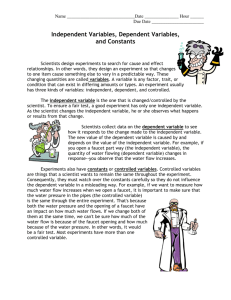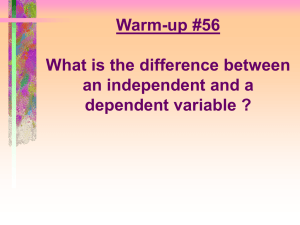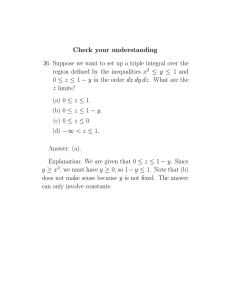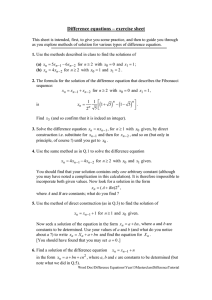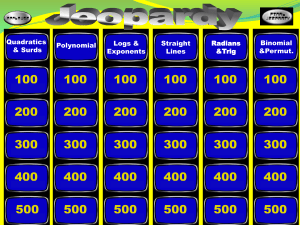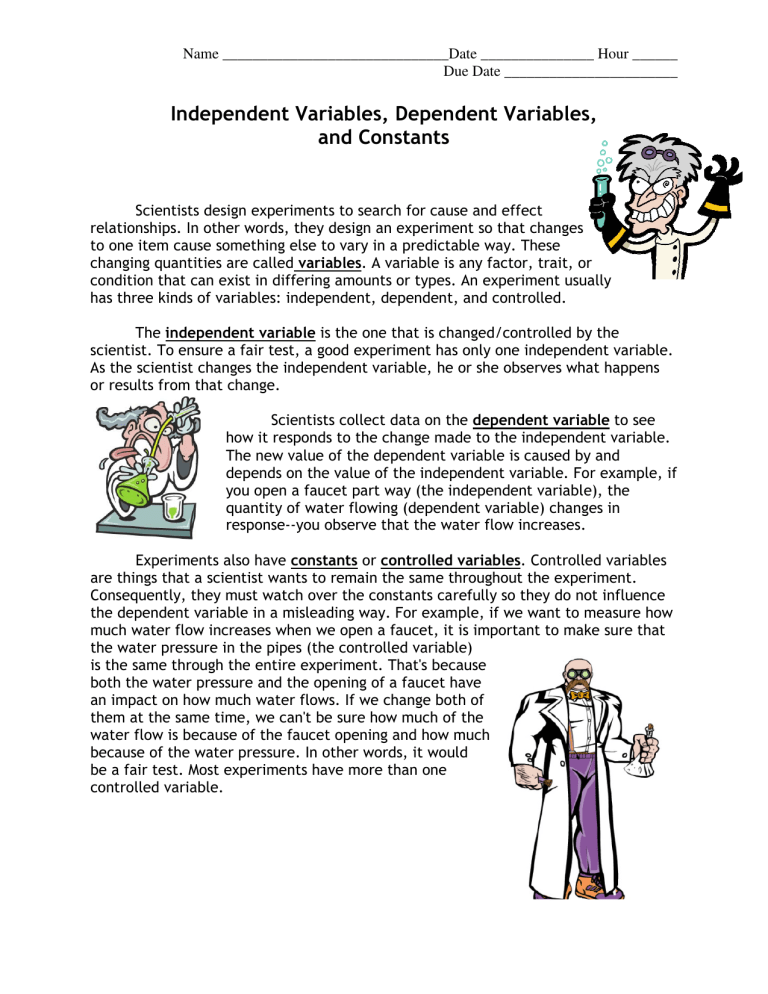
Name ______________________________Date _______________ Hour ______ Due Date _______________________ Independent Variables, Dependent Variables, and Constants Scientists design experiments to search for cause and effect relationships. In other words, they design an experiment so that changes to one item cause something else to vary in a predictable way. These changing quantities are called variables. A variable is any factor, trait, or condition that can exist in differing amounts or types. An experiment usually has three kinds of variables: independent, dependent, and controlled. The independent variable is the one that is changed/controlled by the scientist. To ensure a fair test, a good experiment has only one independent variable. As the scientist changes the independent variable, he or she observes what happens or results from that change. Scientists collect data on the dependent variable to see how it responds to the change made to the independent variable. The new value of the dependent variable is caused by and depends on the value of the independent variable. For example, if you open a faucet part way (the independent variable), the quantity of water flowing (dependent variable) changes in response--you observe that the water flow increases. Experiments also have constants or controlled variables. Controlled variables are things that a scientist wants to remain the same throughout the experiment. Consequently, they must watch over the constants carefully so they do not influence the dependent variable in a misleading way. For example, if we want to measure how much water flow increases when we open a faucet, it is important to make sure that the water pressure in the pipes (the controlled variable) is the same through the entire experiment. That's because both the water pressure and the opening of a faucet have an impact on how much water flows. If we change both of them at the same time, we can't be sure how much of the change in water flow is because of the faucet opening and how much because of the water pressure. In other words, it would not be a fair test. Most experiments have more than one controlled variable. Practice Problems - Using the information in the following phrases, identify the independent variable, dependent variable, and any constants. 1. Does heating a cup of water allow it to dissolve more sugar? Temperature of the water is measured in degrees Centigrade. Amount of sugar is measured in grams. Independent Dependent Constants 2. Does fertilizer make a plant grow bigger? Amount of fertilizer measured in grams, quantities of water measured in milliliters. Independent Dependent Constants 3. Does an electric motor turn faster if you increase the voltage? Voltage of the electricity used is measured in volts. Speed of rotation measured in revolutions per minute (RPMs) Independent Dependent Constants 4. How fast does a candle burn? Time measured in minutes. Height of candle measured in centimeters at regular intervals of time (for example, every five minutes) Independent Dependent Constants 5. Dr. Smith wants to examine whether a new drug increases the maze running performance of older rats. Just like aging humans, older rats show signs of poorer memory for new things. Dr. Smith teaches two groups of older rats to find a piece of tasty rat chow in the maze. One group of rats is given the new drug while they are learning the maze. The second group is not given the drug. One week after having learned the maze he retests the rats and records how long it takes them to find the rat chow. Independent Constants Dependent
